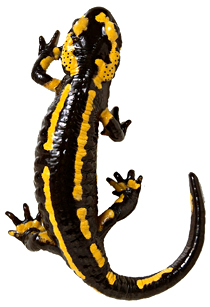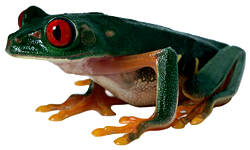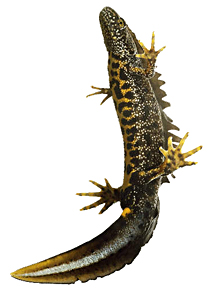Amphibians generally start life in water, but later change so that they can live on land. Most return to the water to mate. The life cycle involves three stages: egg, larva, and adult. The change from larva to adult is known as metamorphosis. Amphibians are ectothermic (cold-blooded) animals that have a bony internal skeleton. They have small lungs and can also breathe through their smooth skin, which must be kept moist.

The bright stripes on the fire salamander warn other animals that it tastes unpleasant. Like many salamanders, it spends all of its adult life on land. Newts, on the other hand, always return to water to breed. Salamanders and newts are carnivorous. They have a slim body, a long tail, and four legs of about the same size.
AMPHIBIA
Class: Gymnophiona
Features: limbless, worm-like, poor sight
Class: Anura
Features: wide head, no tail, powerful back legs

Class: Caudata
Features: long tail, carnivorous larvae, good sense of smell

0 comments:
Post a Comment